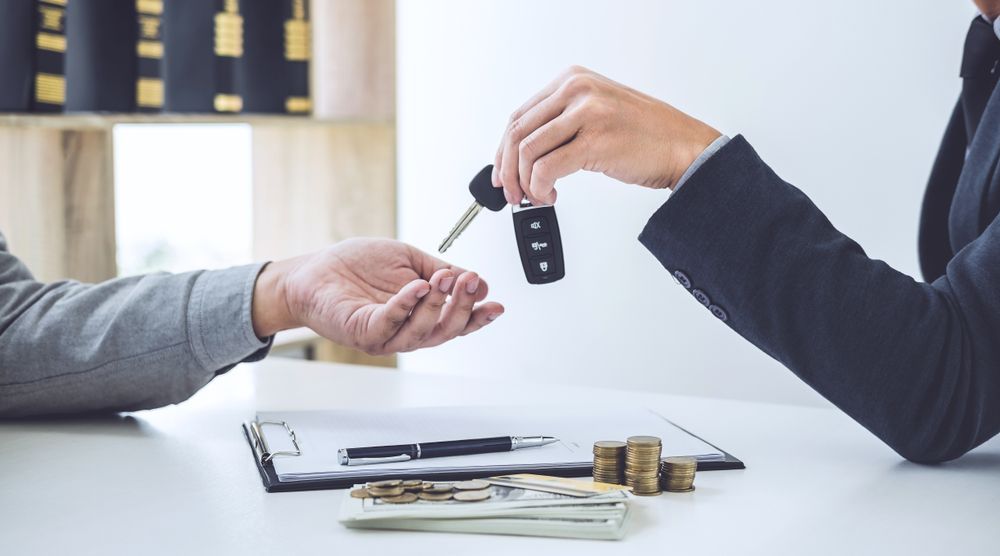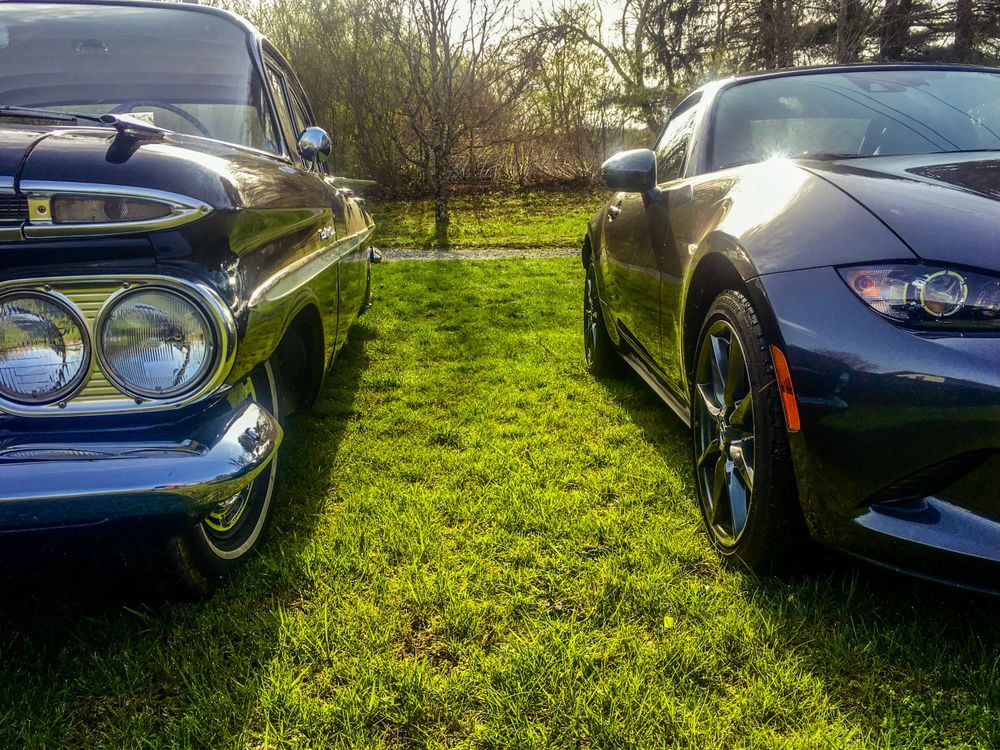
Buying Guide for Used Cars - The Car Buying Process Used Car Negotiation Negotiating a car deal used to be a daunting task. Now, thanks to great websites like Motorclearance.com, salespeople no longer have the upper hand. The first step in being an effective negotiator is setting a personal budget for a car including its insurance costs. Once these have been established, resources such as Kelly Blue Book can show you what to expect to pay for the type of vehicle with the options and features you need. Its fair to say that now more than ever we are living in a consumer-oriented sales environment. Equipped with the proper knowledge, car buyers can expect to effectively and quickly negotiate the price of a used vehicle. Leasing Pros and Cons Leasing Pros:
- Easy to qualify!
- Short lease terms: Some leases are available as "lease assumptions" in which you take over another lease. This will allow you to lease for very short time periods.
- New cars depreciate the most in their first few years of life. Because of this, leasing used cars allows for lower monthly payments.
- Purchased vehicles typically require a larger down-payment than leased vehicles. Leasing Cons:
- Fewer options exist for used car leases than for new cars.
- With no interest rate cap, monthly payments may be higher with leased used vehicles.
- Used vehicles may not continue to carry the factory warranties from when they were new.
- Depreciation rates may be set artificially low thereby increasing monthly payments. Used Car Lease Tips Savvy consumers will quickly realize that research is key to negotiating the best deal on a used car lease. Not only do you need to find out which make and model you're interested in; you must also find dealers that will work with you to negotiate a lease that is fair and reasonable. Lease scams await unsuspecting consumers, so its important to understand exactly what is being offered. Here are important tips for leasing a used car:
- Certification: Why lease a certified pre-owned vehicle? These vehicles often come with a dealer warranty which may cover normal repairs and maintenance. This is important because used cars typically will be higher in maintenance costs than new cars.
- Assume a lease: Lease assumption means that you will essentially pick-up where another lessee left off, often resulting in lower monthly payments, shorter lease terms, factory warranties, and lower interest rates.
- Negotiate: Many people who lease neglect to negotiate the final selling price of the vehicle - one of the determining factors of final monthly payment. Compare the asking price with the prices of comparable vehicles and negotiate from there.
- Look at the history: Just because a car looks "like new" doesn't mean its mechanically sound. Be sure to check accident and repair history as well as the title by utilizing a vehicle history report service.
- Get an inspection: A qualified mechanic can provide information the dealer may be holding back. Have a mechanic you trust look over the car and check for needed repairs and mechanical damage.
- Calculate the interest: Not all lease contracts explicitly specify the interest rate. If you notice that the interest rate is not present on the lease contract, request that the dealer put the interest rate in writing. Why Buy Used?
- Dealer warranty: Reliability usually decreases year over year throughout the lifetime of a car. Look for deals that include warranties. This will prevent the risk assumed by buyers who purchase or lease non-warrantied vehicles which may end up costing more in the long run.
- Reliability: Today's used cars have proven to be more reliable than used vehicles of years past. What this means is that you are less likely to be paying expensive repair bills for rust, exhaust replacement, and major transmission and engine problems.
- Interest rates for loans on used cars are usually less than those on new cars.
- Safety: Not all used cars have the advanced safety features of their new counterparts. Used cars do however have safety features as standard which may have been options in years past. This may include anti-lock brakes, traction control, and side curtain airbags. Look for used cars that have the safety features you feel are the most important.
- Used cars depreciate at a slower rate than new cars. Most models lose the majority of their value during the first three years of ownership. What this means for used car buyers is that the vehicle will hold more of its value over time. Additionally, some cars have shown to depreciate less over time due to their perceived quality, availability, and popularity.
- Used cars normally cost less to insure than a comparable new car. How Much Can You Spend? Deciding how much to spend on your used car is one of the most important things to consider before choosing which model to buy. Here are the two most vital numbers to calculate: 1) What kind of down payment you can afford, 2) How much you are able to pay monthly. Down payments are made to the dealer in the form of a trade-in vehicle, cash, or a combination of the two. Not all auto loans require large down payments, but it is advisable to put down as much as you can afford (typically at least 20% of the total purchase price of the vehicle). Some loans may only require a 5% down payment for example, but these loans usually result in higher monthly payments. If you already own a vehicle that you wish to trade-in, the dealership may offer a cash allowance for that car. If the cash offer from the dealership does not meet your expectations, you may elect to sell the car yourself. This often results in higher profit than a dealer trade-in but may be more time-consuming and could prolong the buying process. To estimate an affordable monthly payment, it is recommended that you spend roughly 36% of your gross monthly income minus the total of your regular monthly expenses (mortgage, credit cards, etc.). What To Look For In A Used Car
- Inspect the body: Does the car have dings, dents, or rust? Inspect all body panels for areas in need of repair.
- Has the vehicle been re-painted? Examining doorjambs, under the hood, and visualizing surface gloss can give clues as to whether or not the paint is original.
- Tires should have even wear: Check to see that tires are worn uniformly.
- If a car has a dark, oily residue inside the tailpipe, this may suggest that the car's engine is burning oil.
- Look for repairs: A magnet can be used to check for body filler material that was used to repair damage. A car with damaged panels may be worth less.
- Fogged-up headlights give a clue that moisture has contaminated the lamp housing. Used or Certified Pre-Owned? Buyers may notice that vehicles labeled "Certified" often carry a premium over other used cars. Many dealers offer these programs to consumers as a way to decrease the risk and increase the perceived value of a used car purchase. Certified cars are often screened for age (normally no more than 5 years old) and/or mileage (less than 60,000 for example) and undergo a title check for accident history. In addition, some dealers will inspect the mechanical parts of a used car and make repairs as needed. Unfortunately, not all certification programs are created equal. In fact, there is no industry standard for what qualifies as "certified pre-owned". Some less scrupulous dealers may even call a vehicle "certified" without doing any reconditioning. On the other hand, many reputable dealers will thoroughly inspect and repair the car and offer it for sale with a manufacturer-backed warranty. When purchasing a certified pre-owned car, be sure to examine the fine print of the warranty contract to ensure the coverage you're receiving is worth the price premium over non-certified counterparts. When purchasing a certified car, ask the dealer whether the warranty program is a third-party program or a manufacturer program. Ask what the warranty covers and if there is a deductible. Finally, be sure to ask where warranty service will be provided if a claim is to be made. Negotiating Your Trade-In As discussed earlier, trade-ins may be used as a down-payment or as a down-payment supplement. Here are some ways to get the most for your trade:
- Get multiple quotes for your trade.
- Ask dealers to make offers on your trade. Competition for your vehicle will ensure you get the most money.
- Be sure to know the total price of the new or used car you will be buying.
- The final price of your vehicle can be calculated by subtracting your trade-in, down-payment, and incentives/rebates from the total price of the new car.
- Using the interest rate provided from your lender, calculate monthly payments.
Read next


Buying Guide For Auto Financing

